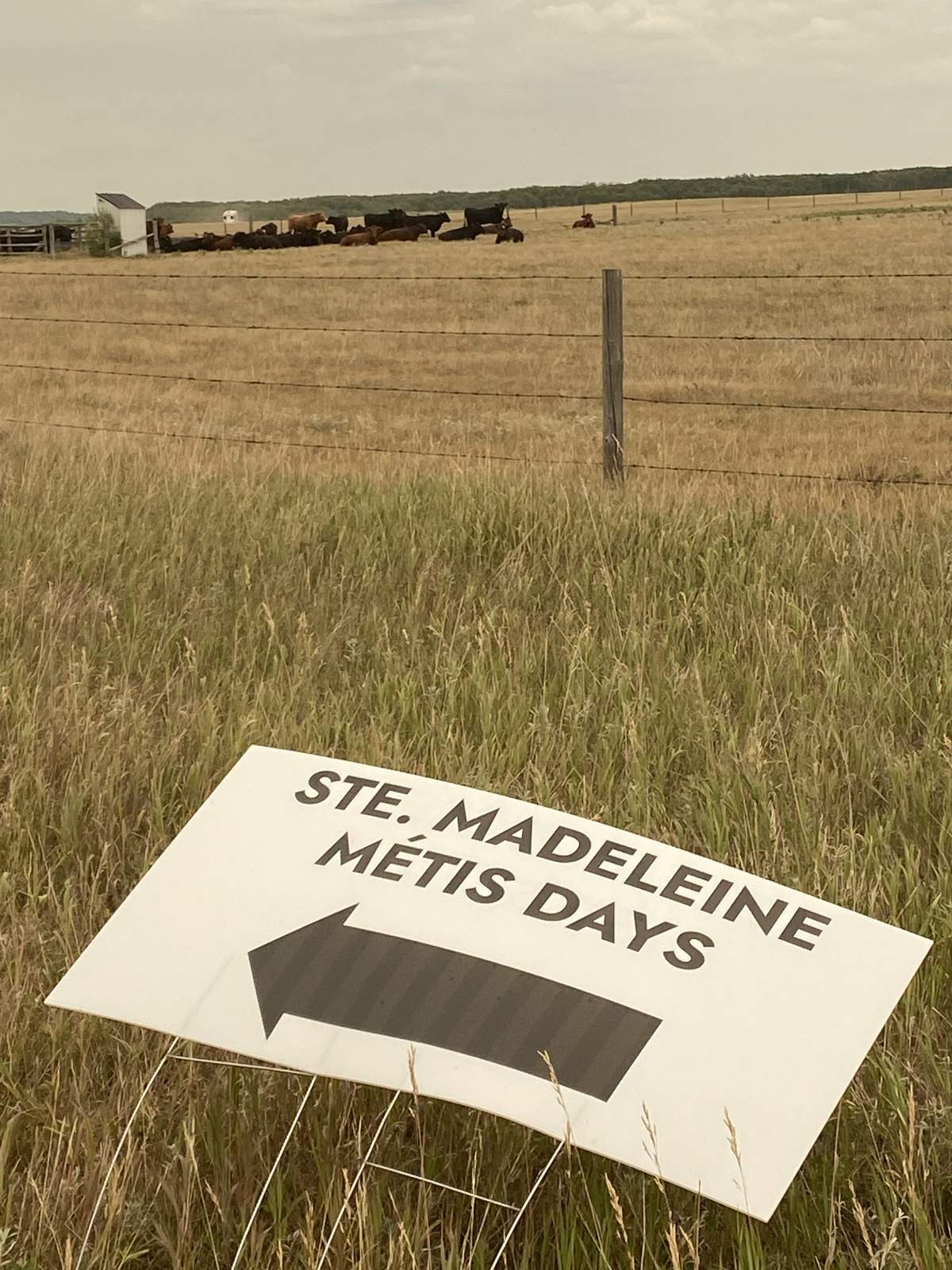Fresh off an Oct. 4 election victory, Premier Wab Kinew told the Manitoba Métis Federation something many had been waiting to hear for generations.

“There are many specific priorities of the Métis people and Métis Nation and one of them is Ste. Madeleine,” Kinew told those gathered for the MMF’s annual general assembly Oct. 14.
“I want you to signal to you, that I know this is an important priority.”
While his words garnered thunderous applause, he stopped short of promising to return any of the 26-square mile field where the village of Ste. Madeleine stood until 1938 when the government burned it down under the Prairie Farm Rehabilitation Act to create a community pasture.
Thirty-five Métis families lived in the village, 340 kilometres west of Winnipeg near Binscarth, Man. There was a school and a church. All that remains now is the cemetery.
Elder Verna DeMontigny’s parents were among those displaced. She said that while families were away working on farms or harvesting food or medicines, government officials levelled the community.
“When they came back in October, their house was already burned down and their dog was shot,” she said. Residents relocated to towns and in some cases, First Nations in the area.

Get daily National news
“They had only what was on their backs — what little else they had was gone.”
“What’s more shocking is that this was not in the 1800s — it was in the 1930s,” said MMF president David Chartrand. “This historic wrong remains a great stain on the history of Canada and Manitoba. It’s still hard to believe that a community could experience this shameful treatment, just so that cattle could graze where these homes once were. Ste. Madeleine has been one of our saddest stories, and its aftermath continues to affect thousands of our citizens today.”
The story was memorialized with a permanent exhibit at the Manitoba Museum called Ni KishKishin: I Remember Ste. Madeleine.
Every third weekend in July for the past three decades and counting, descendants of the village gather in tents and campers in the field surrounded by grazing cattle. They care for loved ones’ burial sites and remember the history that displaced them. But they also celebrate community and culture with food and entertainment.
The Association of Manitoba Community Pastures manages the land that’s currently used by 40 cattle farmers. General manager Barry Ross says the association will not oppose giving the land back to the Métis if that’s what the provincial government decides.
The newly elected NDP won’t say how much land — if any — would be returned to the Métis but Chartrand is hopeful discussions begin soon.
“Now that we’ve heard the premier’s intentions, we can begin to make plans, and direct our thoughts to how we can ensure that no one ever forgets what happened to our people,” Chartrand said.
Some, like DeMontigny and fellow descendant Kim Smith, who organizes Ste. Madeleine Days, dream of a village being rebuilt on the land.
“Oh God, I think about that all the time, actually,” Smith said. “Maybe one day my grandchildren will be able to live here.”
DeMontigny said she would love to build a log cabin.
“I’ve got my spot picked out already,” she said.













Comments